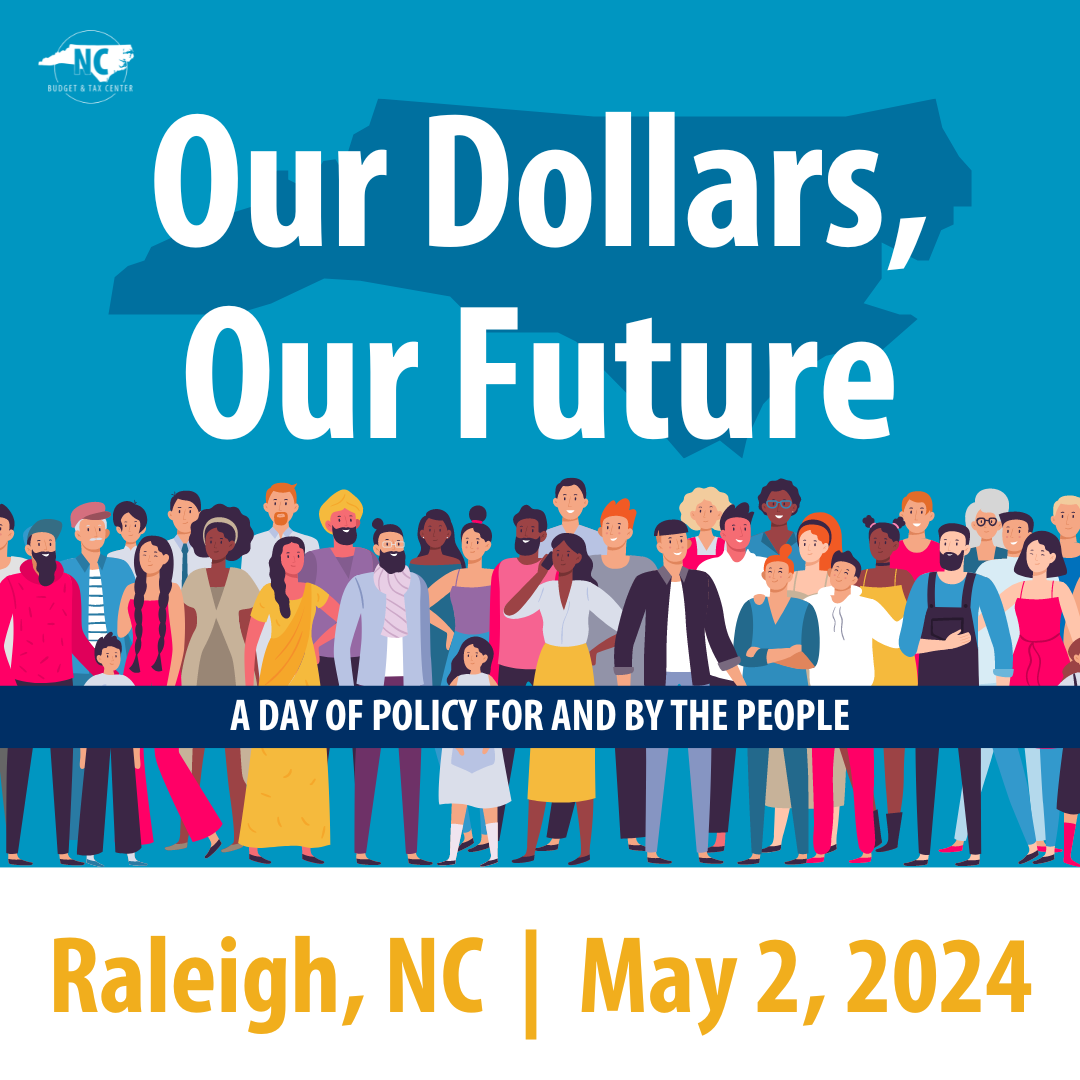
NCGA leaders lock in more tax cuts in final budget while abandoning transparency and accountability
[Note: Here are links where you can access the budget bill and the conference report. You can also see how members of the NC Senate and NC House of Representatives voted for this conference budget.]
The NC General Assembly’s budget decisions this year will have repercussions for years and decades to come, and instead of providing support to North Carolina communities who need more to thrive, legislative leaders have instead continued on a course that will deepen harm.
Last week, the leadership of the North Carolina House and Senate chambers reached agreement on a two-year spending plan for the state after months of closed-door negotiations that extended into the new fiscal year. In the same week that the closed-door deals were finalized, the conference budget was released to the public and received final approval in each legislative chamber before being sent to the Governor’s desk. The Governor will allow it to become law without his signature, signaling his concerns with many aspects of the spending plan but at the same time recognizing that people must have access to the health care they were promised this spring.
When legislative leaders finally approved the long-overdue expansion of Medicaid earlier this session to more than 600,000 North Carolinians, they tied its implementation to the passage of a final budget. This cruel and unnecessary choice enabled a host of bad policies, including changes that further erode government transparency and investment decisions to become law through a final budget that primarily advances the interests of the wealthy few over the interests of everyday North Carolinians.
First, this two-year spending plan commits the state to additional income tax cuts through the rest of the decade, which will harm North Carolina’s ability to raise revenue, all but guaranteeing that major budget cuts, future tax increases, and/or revenue-raising schemes through gambling will on the table in the coming years.
The budget deepens personal income tax cuts, with the hopes of reaching 2.49 percent by the end of the decade if certain revenue criteria are met. This irresponsible plan will decimate the state’s ability to generate funds to pay for what all North Carolinians rely on – public schools, parks, roads, clean water, and more.
Second, the budget continues to underinvest in public schools while rapidly expanding taxpayer support for private school vouchers, siphoning funding away from public schools, which accept all students, in favor of private schools that can turn students away. This budget flies in the face of the Leandro comprehensive remedial plan as well as parents, students, teachers and other school personnel who have begun the new school year without adequate staffing, pay, classroom resources, and sufficient bus routes. Moreover, it fails to budget critical state dollars to bolster the early childhood education system that ensures children are prepared for lifelong education and working families have quality care for their children.
The final budget cements what has been observed throughout the budget process this long session – an emboldened majority, with a narrow supermajority, capitalizing on seemingly unchecked power, acting desperately to secure additional power, and stopping at nothing to do so.
Deepens income tax cuts and harm to public good while claiming fiscal responsibility
The conference budget aligns with the Senate’s tax plan proposed earlier in the legislative session, which will deepen cuts to the personal income tax through the decade and harming North Carolina’s ability to generate revenue to pay for public good and services for decades to come unless it is stopped.
The tax changes will lower the personal income tax rate from the current 4.99 percent to 3.99 percent in tax year 2026, and then down to 2.49 percent by 2029 if certain criteria are met. Championed by those who are willing to pursue shifts in the tax code that ask more from those with lower incomes, so called “tax triggers” are criteria that must be met in order to cause a lowering of the tax rate to a pre-determined level depending on the year. Legislative leaders’ use of these arbitrary criteria shows their focus on reducing the taxes owed by the wealthy and their willingness to keep on the table increases in the sales tax and fees that ask more from those with the lowest incomes.
If allowed to be carried out, this tax plan will devastate North Carolina’s already-starved public systems for generations to come. Analysis of the impact of reducing the personal income tax rate down to 2.49 percent shows it’s sure to lead to deeper budget cuts across all areas of the budget in order to meet the balanced budget requirements the state (unlike the federal government) is required to meet.
What’s worse is that this plan overwhelmingly benefits the richest 20 percent of North Carolinians.
Together with the General Assembly’s move to eliminate the corporate income tax in the 2021-2023 budget, which will also be fully phased in by the end of the decade, the combined personal and corporate income tax cuts will result in more than $8 billion less in revenue each year if only the first trigger is met and, according to N.C. Office of State Budget and Management, as much as $13 billion each year compared to the revenue generated from today’s tax code, representing nearly 20 percent of the state’s General Fund. That’s billions less each year to spend on the public schools, roads, public parks, and affordable housing that we all benefit from.
Holds spending low, aligned with arbitrary spending cap
This year’s spending totals were decided at the outset of the budget process by House and Senate leaders and create artificial constraints to budgeting that leave many unmet needs. What’s more is that they reflect what’s left after tax cuts are provided to the wealthy and corporations and are not the product of a comprehensive assessment of what North Carolina communities and families actually need.
The conference budget spends $29.7 billion in the first year of the two-year biennium, or 4.9 percent of spending as a share of the economy. This budget falls short by $5.6 billion compared to the 50-year spending average as a share of the economy, which is 5.8 percent.
The second year of the two-year budget outlines a spending total of $30.8 billion, representing 5 percent of the state’s economy, which falls $4.3 billion below the 50-year spending average. However, the second year of the biennium is subject to changes in next year’s “short” legislative session, when lawmakers revisit their proposed spending for year two of the budget, which often leads to changes in spending decisions.
These budget totals mark an increase in state spending as compared to the past three fiscal years when spending was historically low compared to the size of the state’s economy; however, they align with the first three years of the COVID-19 pandemic when an influx of federal funding arrived to help meet the needs of our underfunded state.
Transfers a whopping $5.8 billion to more than a dozen reserve funds
Instead of allocating taxpayer dollars to today’s needs in a clear and transparent way in the budget documents, legislative leaders have once again chosen to divert funds to a slew of reserve funds. Totaling approximately $5.8 billion in the first year of this biennium, this level of investment through reserves represents a substantial increase over last year’s approximately $4 billion transfer to reserves for FY 2022-23.
Of note, many of the funds from these transfers are almost immediately allocated in the budget. The difference is that spending from reserve accounts (the Savings Reserve being the major exception, as its uses are outlined in the State Budget Act) are not met with the same transparency and accountability as appropriation line items and are therefore growing in favor with the current General Assembly leadership.
This year, the State Capital and Infrastructure Fund (SCIF) received a statutory allocation of approximately $1.4 billion and an additional discretionary sum of $1.05 billion, totaling $2.5 billion in the first year of the biennium. Compared to last year’s $3.2 billion, and the prior year’s $3.6 billion for the SCIF alone, three years of data seem to show lawmakers starting to put the SCIF out of favor and instead ushering in a slew of reserve funds with more specific purposes.
Abandons democratic processes in favor of consolidated power and neglect for transparency
The hurried process for introducing and passing the conference report aligns with the process for the House and Senate proposed budgets. That is, making the contents of the more than 1,400-page documents understood to fellow lawmakers and the public was not among the priorities for legislative leaders. A near-final draft version of the budget was leaked by an unnamed source to the media two days prior to the final version being posted online.
All told, the contents of the final budget were made public less than 24 hours before the initial voting took place, and the final votes of approval were made less than 48 hours after the documents were made public.
House and Senate rules, adopted each session, dictate the process for “conference reports,” where members of the House and Senate are appointed to serve on the “conference committee” and come to agreement based on the House and Senate versions of the budget. While conference reports cannot be amended and can only be sent to a vote by the House and Senate chambers, there is nothing in the House and Senate rules that prevent information about the contents of the conference report to be shared to the public prior to a vote.
In addition to the spending decisions reflected in the conference report, the budget includes many harmful policy changes, including changes to public record laws that will give lawmakers discretion as to what information to share, more shifts of power to the General Assembly, and more.
Given the process for both the Senate and House budgets – no public input process, rushed legislative committee meetings, little time for lawmakers to read the contents prior to voting, and other poor legislative practices – the process for the conference budget continues the anti-democratic trends that this General Assembly has championed.
While legislative leaders celebrate securing the votes to pass a two-year budget after months of delays, it’s the people of North Carolina that will pay the price for lawmakers’ shortsighted vision for our state. In the coming weeks and months, we will learn more about the contents of the budget and what it means for our families and communities, and we’ll continue to push for a brighter future in North Carolina where the people’s priorities are reflected in the decisions made by leaders elected to serve all the people of our state.



